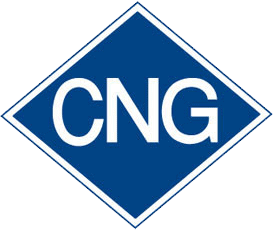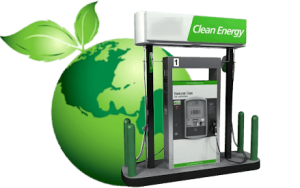Fixing CNG Costs Saves Your Fleet Money As Gas Prices Fluctuate
In 2013, natural-gas powered vehicles across the country saved 400 million gallons of gasoline and produced 14% fewer greenhouse gas emissions from light trucks. Natural gas is being touted by OEMs and others as the newest-best alternative for lowering fleet costs, whether your fleet includes big-rig tractors or light-to-medium duty trucks.
Newly introduced light trucks from Chevy and Ford have bi-fuel hybrid options that run on both gas and compressed natural gas (CNG). They may represent a significantly improved alternative for managing your fleet costs, but you have to evaluate the costs and benefits carefully.
The U.S. Energy Department estimates you can save about $1.50 per gasoline-gallon-equivalent (GGE) by purchasing compressed natural gas rather than gasoline.
Stabilizing the price of fuel.
 If you’ve added some CNG trucks to your fleet, you can capture the biggest fuel savings by negotiating a fixed cost arrangement with your fuel provider. That enables you to increase expense predictability by sidestepping fluctuations in fuel prices, which can be a real benefit in managing your fleet. And you can avoid the capital expense of adding fueling infrastructure to accommodate CNG.
If you’ve added some CNG trucks to your fleet, you can capture the biggest fuel savings by negotiating a fixed cost arrangement with your fuel provider. That enables you to increase expense predictability by sidestepping fluctuations in fuel prices, which can be a real benefit in managing your fleet. And you can avoid the capital expense of adding fueling infrastructure to accommodate CNG.
Your provider benefits from your long-term commitment and the fact that you’ll have to fuel-up at their locations.
Setting a fixed price works because the cost of CNG is comparatively flat, unlike gas and diesel prices, and supplies are abundant here in the U.S. Some industry watchers expect the supply to remain steady for at least the next five to ten years.
You could expect to cut your costs by 50-75 cents per GGE with a fleet contract, depending on the size of your fleet. In addition, officials at Ford note that if alternative fuel tax incentives are renewed this year, the rebate could help you save another 50 cents per GGE.
It’s a matter of calculating the total cost of ownership.
Fuel costs can be significantly lower with compressed natural gas, but the price to buy and the costs of ongoing maintenance are higher. 2015 model Chevy Silverado 2500HD and 3500HD pickups will cost $9500 more with the bi-fuel option, and costs to convert Ford F-150 trucks can run $6000-$9500.
 How many miles will it take to recoup the additional up-front and maintenance costs? How long to you expect to own the truck?
How many miles will it take to recoup the additional up-front and maintenance costs? How long to you expect to own the truck?
And how much fuel does that bi-fuel pickup really hold? Industry experts say the stated size on a CNG tank is not the actual useable capacity, thanks to the fact that tank pressure decreases as fuel volume decreases. Unlike gasoline, CHG is gaseous, so the pressure is required to push the gas through the system to the engine. However, when the pressure gets below a certain point, flow stops. So there is CNG in the tank you can’t effectively use.
In practical terms, that means a “17 GGE” fuel tank will probably give you 12-13 GGE. General Motors claims their bi-fuel pickup trucks have a range of 650+ miles, and Ford claims 750+. But with the reduced reality in terms of fuel capacity, you’ll have to do the math to figure a realistic range for your fleet trucks.
In the end, the ability to lower fuel costs even more with a fixed-price fleet contract may be the tipping point in helping you determine if compressed natural gas should be part of your fleet’s future.
